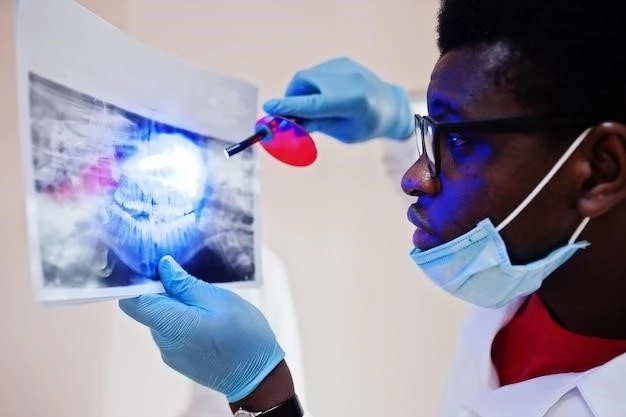Introduction to Oral Squamous Cell Carcinoma
Oral squamous cell carcinoma (OSCC) is the most common oral malignancy, representing up to 80-90 of all malignant neoplasms of the oral cavity. Globally, OSCC is the 6th-9th most common anatomical location for cancer, with noticeable geographic disparities in incidence.
Overview of OSCC
Oral squamous cell carcinoma (OSCC) is a prevalent form of cancer that develops in the oral cavity mucosa. It is the most common oral malignancy globally, with a 5-year overall survival rate ranging from 40-80%, depending on the stage of detection. OSCC often arises from multiple genetic mutations in oral epithelial cells, mainly due to risk factors such as tobacco and alcohol use. Early detection and timely intervention play crucial roles in improving patient outcomes.
Epidemiology of Oral Squamous Cell Carcinoma
Oral squamous cell carcinoma (OSCC) accounts for a substantial number of new cancer cases globally, with around half a million new diagnoses annually. The incidence of OSCC varies among regions, with a higher prevalence in some developing countries. 5-year survival rates also depend on the stage of detection, emphasizing the importance of early diagnosis and prompt treatment.
Global Incidence and Mortality Rates
Oral squamous cell carcinoma (OSCC) accounts for a substantial number of new cancer cases globally, with an estimated 377,000 new diagnoses annually and over 177,000 deaths. The incidence of OSCC varies geographically, with a higher prevalence in some regions, especially developing countries. Notably, the 5-year overall survival rate for OSCC varies based on the stage of detection, emphasizing the importance of early diagnosis and effective treatment strategies.
Geographic Disparities in Incidence
Due to noticeable geographic disparities, oral squamous cell carcinoma (OSCC) incidence varies worldwide, with the majority of cases concentrated in developing regions. Factors contributing to these disparities include varying tobacco and alcohol consumption patterns, HPV prevalence, and access to healthcare. Effective public health strategies tailored to specific regions are crucial to address these discrepancies and improve the prevention and management of OSCC.

Clinical Presentation and Risk Factors
Oral squamous cell carcinoma (OSCC) commonly affects individuals in their fifth and sixth decades of life, with risk factors including tobacco, alcohol use, and human papillomavirus infection. Clinical manifestations may include non-healing ulcers, white or red patches, and difficulty in swallowing. Early identification of these signs is crucial for prompt diagnosis and management of OSCC.
Common Etiological Factors
Oral squamous cell carcinoma (OSCC) commonly arises due to multiple genetic mutations in oral epithelial cells, often triggered by risk factors such as tobacco and alcohol use. Additionally, human papillomavirus (HPV) infection has been associated with a significant proportion of OSCC cases. These etiological factors play a crucial role in the development and progression of OSCC, highlighting the importance of preventive measures and early detection strategies.
Association with Tobacco, Alcohol, and HPV
Oral squamous cell carcinoma (OSCC) is significantly associated with risk factors such as tobacco and alcohol use. These habits contribute to genetic mutations in oral epithelial cells, increasing the likelihood of OSCC development. Moreover, human papillomavirus (HPV) infection has emerged as a notable risk factor for a subset of OSCC cases, highlighting the multifactorial nature of this oral malignancy.
Diagnosis and Staging of OSCC
Diagnosing oral squamous cell carcinoma (OSCC) involves a comprehensive evaluation, including physical examination, imaging tests, and tissue biopsy. Staging helps determine the extent of cancer spread, guiding treatment decisions. Early-stage detection improves prognosis, highlighting the significance of regular oral screenings and prompt evaluation of suspicious lesions.
Early-Stage vs. Advanced-Stage Detection
Early detection of oral squamous cell carcinoma (OSCC) allows for more effective treatment outcomes and higher survival rates. Advanced-stage detection often leads to more complex treatment modalities and decreased overall prognosis. Regular oral screenings and prompt evaluation of suspicious lesions are essential for detecting OSCC at early stages when treatment is most successful.
Importance of Staging and Grading for Management
Staging and grading play pivotal roles in the management of oral squamous cell carcinoma (OSCC). These aspects help oncologists determine the extent of the disease, prognosis, and appropriate treatment strategies. Proper staging ensures accurate treatment planning, while grading provides insights into tumor aggressiveness and aids in the selection of optimal therapies tailored to each patient’s condition. Effective management of OSCC relies on precise staging and grading processes.

Treatment Options for OSCC
Treatment for oral squamous cell carcinoma (OSCC) may involve surgery, radiation therapy, chemotherapy, or a combination of these modalities. The choice of treatment depends on the stage of the cancer, location, and the patient’s overall health. Discussing treatment options with healthcare providers is crucial for determining the most effective approach for managing OSCC.
Surgical Interventions
Surgical interventions are a primary treatment modality for oral squamous cell carcinoma (OSCC). Depending on the tumor size and location, surgical procedures may involve excision of the tumor, lymph node dissection, or reconstructive surgery. Surgeons aim to achieve complete tumor removal while preserving oral function and aesthetics. Adjuvant therapies like radiation or chemotherapy may complement surgery in advanced cases to improve outcomes.
Adjuvant Radiotherapy and Chemotherapy
Adjuvant therapies like radiotherapy and chemotherapy play crucial roles in the management of oral squamous cell carcinoma (OSCC). These treatments are often used after surgery to target any remaining cancer cells, reduce the risk of recurrence, and improve overall outcomes. Adjuvant radiotherapy is effective in targeting localized areas, while chemotherapy helps in systemic control of the disease, highlighting the comprehensive approach to treating OSCC.
Prognosis and Survival Rates
Oral squamous cell carcinoma (OSCC) has varying 5-year survival rates, ranging from 80% in early-stage detection to 40-50% in advanced-stage cases. Factors influencing prognosis include the stage of diagnosis and treatment effectiveness.
5-Year Overall Survival Rate for OSCC Patients
Oral squamous cell carcinoma (OSCC) has a 5-year survival rate of 80% for early-stage (I or II) diagnoses, but decreases to 40-50% for advanced-stage (III or IV) cases. Early detection significantly impacts patient outcomes.
Factors Influencing Prognosis
Several factors influence the prognosis of oral squamous cell carcinoma (OSCC), including the stage of cancer at diagnosis, tumor size, presence of lymph node involvement, and metastasis. Additionally, the patient’s overall health, response to treatment, and adherence to follow-up care can impact the long-term prognosis of OSCC patients.
Preventive Measures and Early Detection
Epidemiological and genome association studies aid in identifying risk factors for oral squamous cell carcinoma (OSCC). Timely diagnosis through regular oral screenings is crucial for improving prognosis and reducing mortality rates.
Role of Epidemiological and Genome Association Studies
Epidemiological and genome association studies aid in understanding the risk factors and genetic predispositions associated with oral squamous cell carcinoma (OSCC). By identifying these factors, healthcare professionals can implement preventive measures and early detection strategies to improve patient outcomes and reduce the burden of OSCC globally.
Importance of Timely Diagnosis
Timely diagnosis of oral squamous cell carcinoma (OSCC) is critical for improving patient outcomes and increasing survival rates. Early detection through regular oral screenings can lead to prompt intervention and appropriate treatment, enhancing the chances of successful management of OSCC.
